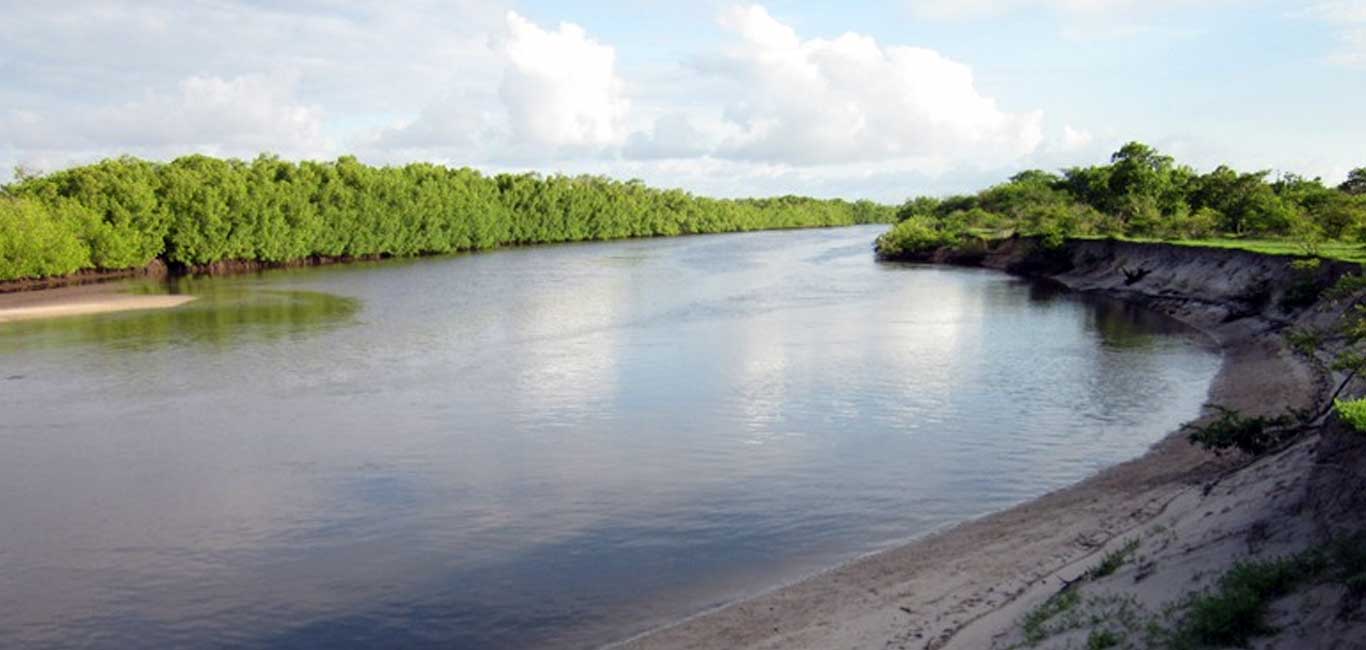Niumi National Park

Niumi National Park features one of the last untouched mangrove stands in West Africa.
Niumi National Park is located in the northern part of The Gambia and is home to a unique ecosystem of mangroves, mudflats, and savanna. The park is an important breeding ground for birds and other wildlife, including several species of monkeys, hyenas, and crocodiles. Visitors can take a boat tour of the mangrove creeks to observe the diverse birdlife or take a guided walk through the savanna to learn about the local flora and fauna. The park is also an important site for ecological research and conservation efforts.
Niumi National Park was established in 1993 by the government of The Gambia as part of a larger conservation effort to protect the country’s natural resources. The park covers an area of approximately 4,940 hectares and is located in the North Bank Region, adjacent to the Gambia River. The park is named after the Niumi people, who are the indigenous inhabitants of the region.
The park’s mangrove ecosystem is particularly important as it provides a habitat for a variety of wildlife and helps to protect the coastline from erosion. The mangroves also serve as a breeding ground for many fish species, which are an important source of food for local communities.
Over the years, the park has faced various challenges, including illegal fishing and logging, and encroachment by local communities. However, efforts have been made to address these issues through community engagement and awareness-raising programs.
Today, Niumi National Park remains an important site for ecological research and conservation efforts in The Gambia. It is also a popular destination for tourists who are interested in exploring the country’s unique natural heritage.
The Niumi people are an indigenous group of people who inhabit the region around Niumi National Park in The Gambia. They have a long history of living in harmony with the mangrove ecosystem and using its resources sustainably. The Niumi people rely on fishing and agriculture for their livelihoods and have developed their own traditional knowledge and practices to manage the mangrove forests in a sustainable way. They have a strong connection to the land and the environment and believe in maintaining a balance between human activities and the natural world. The Niumi people have also contributed to the preservation of the historical and cultural heritage of the area, which includes the ruins of a 19th-century British colonial fort and other historical sites.
The history of the Niumi people dates back to the pre-colonial era of The Gambia. The Niumi region, located in the northwestern part of the country, was an important center of trade and commerce, with its strategic position on the river and proximity to the Atlantic Ocean. The Niumi people had established trade links with other communities along the river and the coast, and were involved in the exchange of goods such as salt, cloth, beads, and other commodities.
During the colonial era, the British established a fort at Albreda, near the mouth of the river, which was used as a trading post and a base for suppressing the slave trade. The Niumi people played a key role in this, providing intelligence and support to the British authorities. However, the colonial period also brought about significant changes to the Niumi region, with the introduction of cash crops such as groundnuts, and the displacement of traditional agriculture and fishing practices.
Since independence, the Niumi people have been actively involved in efforts to promote sustainable development and conservation of the mangrove ecosystem. The establishment of Niumi National Park in 2008 was a major milestone in these efforts, providing a platform for the Niumi people to showcase their traditional knowledge and practices in managing the mangrove forests. Today, the Niumi people continue to be an integral part of the cultural and ecological landscape of The Gambia.
Visitors to Niumi National Park can enjoy a variety of activities, such as guided tours of the mangrove forests, bird watching, and boat trips along the river. The park is home to a diverse range of wildlife, including monkeys, reptiles, and numerous species of birds. Visitors can also learn about the traditional uses of the mangrove forests, such as the production of charcoal and medicinal plants, and the role of the Niumi people in conserving the ecosystem.
In addition to the natural attractions, visitors can also experience the local culture and traditions of the Niumi people. The park is situated near several Niumi villages, where visitors can interact with the local community, learn about their customs and traditions, and even participate in traditional dances and music.
Overall, Niumi National Park offers a unique opportunity to explore the natural beauty and cultural richness of The Gambia and to learn about the important role of the Niumi people in preserving the mangrove ecosystem.

